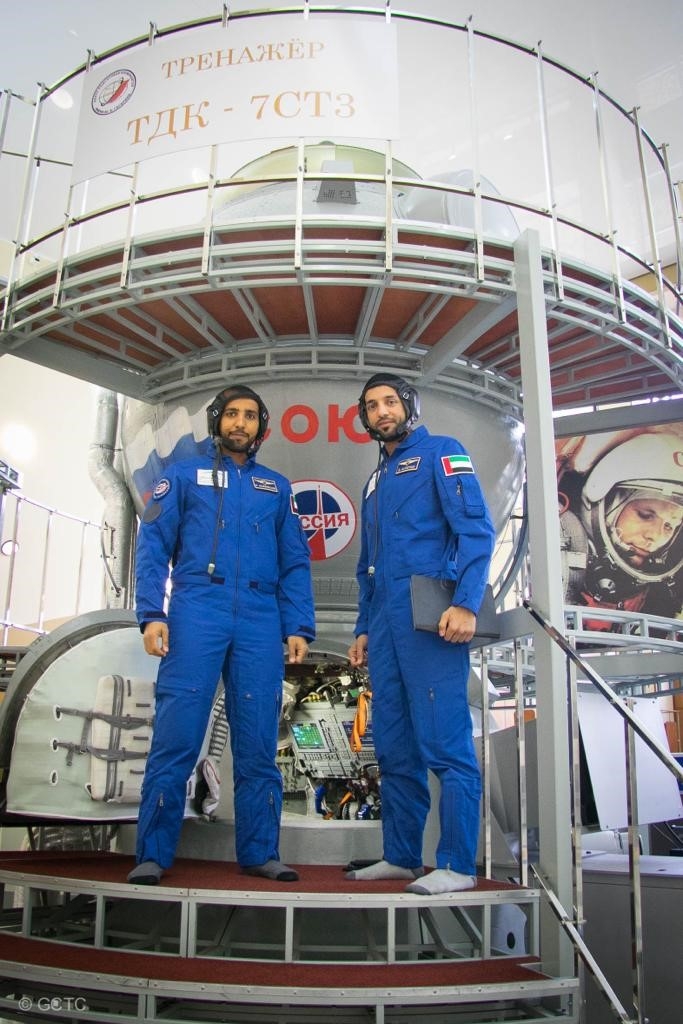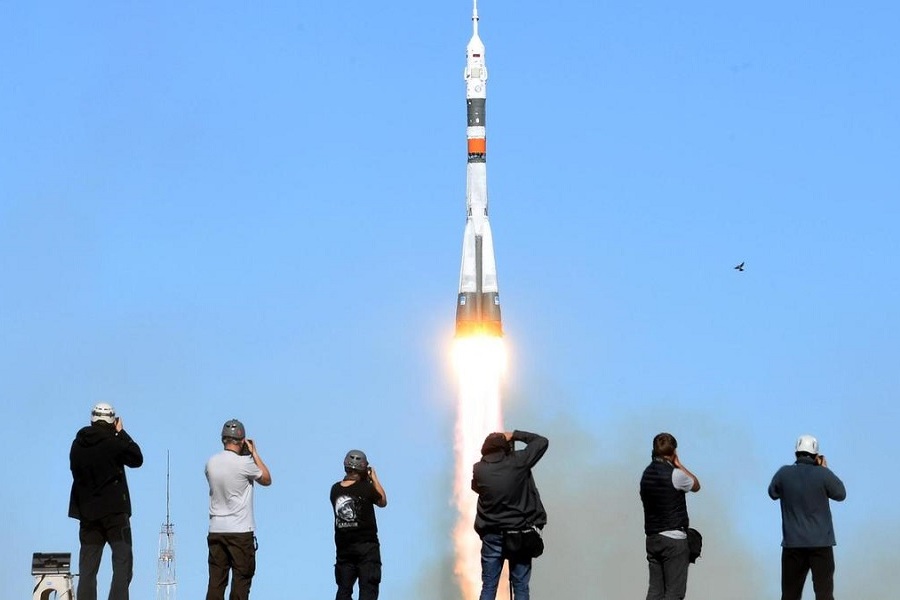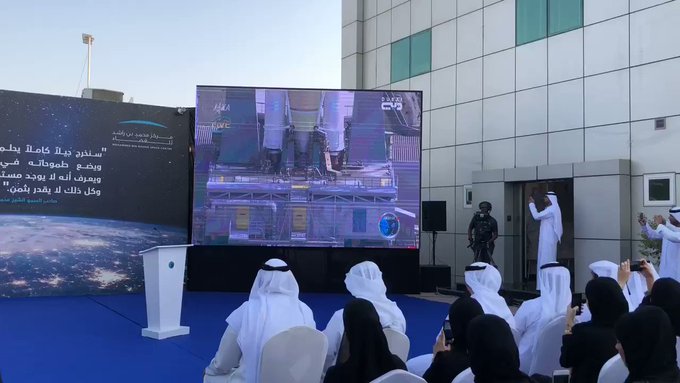Space chiefs have expressed full confidence in the Russian space craft that will carry the UAE’s first astronaut, despite last week’s dramatic launch failure.
A problem with the rocket stages at separation is now believed to have caused the aborted launch of a Soyuz craft on a mission to the International Space Station, with both astronauts returning safely to Earth.
However, an inquiry by both the Russian space agency Roscosmos and America’s NASA could still delay launch plans for the first UAE astronaut, currently scheduled for early April.
A spokesman for the UAE Space Agency said that the safe return of the two astronauts on the failed launch was: “A testament to the high-level Russian space capabilities.”
“We are committed to our joint work with the Human Space Flight partners and we are confident with the safety measures adopted by Roscosmos," he added.
Manned flights to the ISS are currently suspended after the incident last Thursday, with Roscosmos provisionally identifying a collision between the rocket’s first and second stages as the cause although it has not yet said why this happened.
Because the Soyuz rockets also transport American astronauts to the space station, Nasa has said it will also be part of the formal investigation.

Two members of the new UAE astronauts corps are currently in Russia training for the mission.
Either Hazza Al Mansouri, 34 or Sultan Saif Al Neyadi, 37 will become the first Emirati in space.
The UAE last year signed a deal with the Russian space agency Roscosmos to train and fly its astronauts to the ISS, where they will conduct scientific experiments.
The mission, code-named MS-12, was provisionally set for April 5. The Emirati astronaut was to be accompanied by a Russian commander and an American flight engineer, returning to Earth around 10 days later.
The timing of that mission is now uncertain. The director general of Roscosmos Dmitry Rogozin has said on Twitter that the two astronauts from the failed mission, America’s Nick Hague and the Russian Alexey Ovchinin, would be sent back to the ISS next Spring - the slot currently reserved for the UAE.
he next timetabled mission to the space station was set for December 20th this year, with a three man crew who will be relieving the astronauts currently orbiting the Earth.
Both Russia and American have expressed confidence that the launch, which was meant to be the last before the UAE mission, will take place as planned.
Speaking from Moscow, the head of Nasa, Jim Bridenstine, said: “I fully anticipate at this point that we will fly again on a Russian Soyuz rocket and I have no reason to believe at this point that it won’t be on schedule.”
His Russian counterpart, Mr Rogozin, also said that the Soyuz had “a long history of failure-less execution.”
However, it is not yet known how long the official inquiry will take, as well as implementing any recommendations that might emerge.
Roscosmos is still investigating another fault with another Soyuz capsule, which began leaking air two months ago when attached to the ISS.
The cause is though to be hole accidentally drilled by a Russian engineer when assembling the ship, despite initial claims that it might be sabotage.
Kenny Todd, the NASA operations manager for the ISS, has already said that the length of the inquiry was uncertain.
"We'll have to see where the data leads them," he said. "And if that's a month, or if it's two months, or six, I really can't speculate on the length of it.”
A further complication is the rota in which astronauts are sent to the ISS. The three crew of the December launch were intended to replace the current astronauts on the space station.
In turn they would have been relieved by the three astronauts on the UAE mission.
A delay of more than three months raises the very real prospect of the ISS being left unmanned for the first time in its history. The three astronauts currently orbiting the Earth are the Russian Sergey Prokopyev, Nasa’s Serena Auñón-Chancellor and German Alex Gerst from the European Space Agency.
Astronauts leaving the ISS use the crew capsule that brought them there and which remains docked with the space station during their mission.
The batteries which power the Soyuz craft have a life of around 200 days, or just under seven months.
Since the current crew arrived in June, they must be relieved by early January or face the risk of being stranded in space for an unknown time.
Options at this stage are limited. Both the US and Russia can continue to fly supplies to the space station, using unmanned ships, including the SpaceX Dragon.
Should the current astronauts remains on board the ISS beyond January, they may need an additional flight to bring them home, likely further pushing back the UAE mission.
Both Nasa and SpaceX are developing their own manned spacecraft to end America’s dependence on Soyuz after the end of the Space Shuttle programme.
The Boeing Starliner is due to make its first manned flight in August 2019, while a crewed version of the SpaceX Dragon is currently scheduled for June next year.


 Two members of the new UAE astronauts corps are currently in Russia training for the mission.
Two members of the new UAE astronauts corps are currently in Russia training for the mission.














